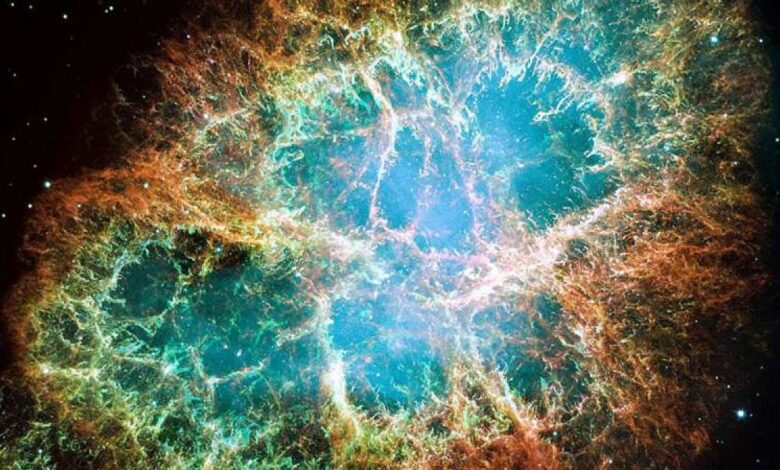New research explains zebra pattern in radio waves from the Crab Nebula

A puzzling “zebra” pattern in high-frequency radio waves emitted by the Crab Nebula’s pulsar may finally have an explanation, according to new research by Mikhail Medvedev, a professor of physics and astronomy at the University of Kansas. This unique pattern, characterized by unusual frequency-based band gaps, has intrigued astrophysicists since its discovery in 2007. Medvedev’s findings, recently published in Physical Review Letters, suggest that wave diffraction and interference occurring in the pulsar’s plasma-rich environment could be responsible.
High-frequency radio pulses create zebra-like patterns
The Crab Nebula, a remnant of a supernova observed nearly a millennium ago, contains a neutron star at its core known as the Crab Pulsar. This pulsar, with a diameter of about 20 kilometers, emits electromagnetic radiation in wavy pulses that resemble the beam of a lighthouse. The Crab Pulsar stands out because of its striking zebra pattern.observed only within a specific pulse component and with frequencies between 5 and 30 gigahertz.
Medvedev’s model assumes that the zebra pattern arises from the pulsar’s dense plasma environment. The plasma, which consists of charged particles such as electrons and positrons, interacts with the pulsar’s magnetic field and affects radio waves in a way that resembles diffraction phenomena seen in light waves. As these waves propagate through areas of varying plasma density, they create a pattern of bright and dark fringes, which eventually appear as the zebra pattern observed from Earth.
Implications for plasma density measurement and neutron star research
Medvedev’s work sheds light on the peculiarities of the Crab Pulsar and provides a method for measuring the plasma density in the magnetospheres of neutron stars. The model uses wave optics to analyze edge patterns and determine the distribution and density of the plasma. This is a breakthrough that could open new avenues for studying other young and energetic pulsars. This innovative method provides what Medvedev describes as a ‘tomography of the magnetosphere’, enabling a density map of charged particles around neutron stars.
Further observational data will be needed to validate Medvedev’s theory, especially as astrophysicists try to apply his method to other young, energetic pulsars. If his model is confirmed, it could help advance our understanding of the plasma environment of neutron stars and the interactions of electromagnetic waves with pulsar plasma.
For the latest tech news and reviews, follow Gadgets 360 X, Facebook, WhatsApp, Wires And Google News. For the latest videos on gadgets and technology, subscribe to our YouTube channel. If you want to know everything about top influencers, follow our in-house Who is that360 on Instagram And YouTube.

ZTE Blade V70 with 108-megapixel main camera, 6.7-inch LCD screen listed online
Realme GT Neo 7 spotted on Chinese 3C certification site, can fast charge at 80W





